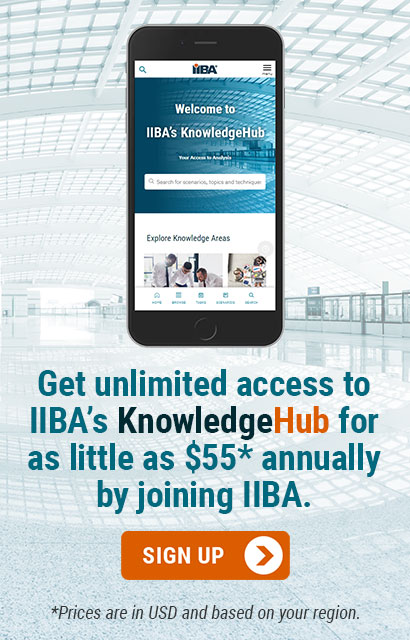
3. Mindset for Effective Business Analysis
3.3 Business Analysis Principles
The Business Analysis Standard
The following business analysis principles detailed in the Agile Extension are critical ingredients for an effective mindset:
- See the whole
- Think as a customer
- Analyze to determine what is valuable
- Get real using examples
- Understand what is doable
- Stimulate collaboration and continuous improvement
- Avoid waste
Principle |
Description |
See the whole |
|
Think as a customer |
|
Analyze to determine what is valuable |
|
Get real using examples |
|
Understand what is doable |
|
Stimulate collaboration and continuous improvement |
|
Avoid waste |
|





















